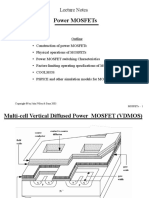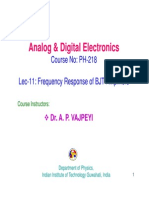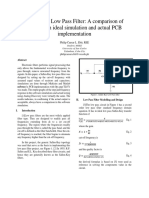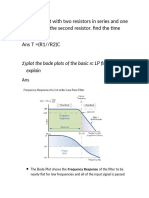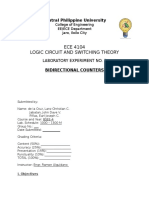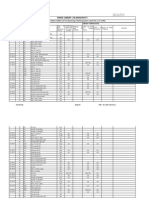0% found this document useful (0 votes)
130 views10 pagesBasic Opamp Applications
This document discusses different types of active filters and their components. It defines key terms like cutoff frequency and describes different filter types including low-pass, high-pass, band-pass, and band-stop. It also explains characteristics of common filter responses like Butterworth, Bessel, Chebyshev and Elliptic. Active filters offer advantages over passive filters like adjustable gain and frequency and no loading effects. Common active filter configurations are also presented, including Sallen-Key and cascaded designs.
Uploaded by
NorbertCopyright
© © All Rights Reserved
We take content rights seriously. If you suspect this is your content, claim it here.
Available Formats
Download as PDF, TXT or read online on Scribd
0% found this document useful (0 votes)
130 views10 pagesBasic Opamp Applications
This document discusses different types of active filters and their components. It defines key terms like cutoff frequency and describes different filter types including low-pass, high-pass, band-pass, and band-stop. It also explains characteristics of common filter responses like Butterworth, Bessel, Chebyshev and Elliptic. Active filters offer advantages over passive filters like adjustable gain and frequency and no loading effects. Common active filter configurations are also presented, including Sallen-Key and cascaded designs.
Uploaded by
NorbertCopyright
© © All Rights Reserved
We take content rights seriously. If you suspect this is your content, claim it here.
Available Formats
Download as PDF, TXT or read online on Scribd
/ 10















